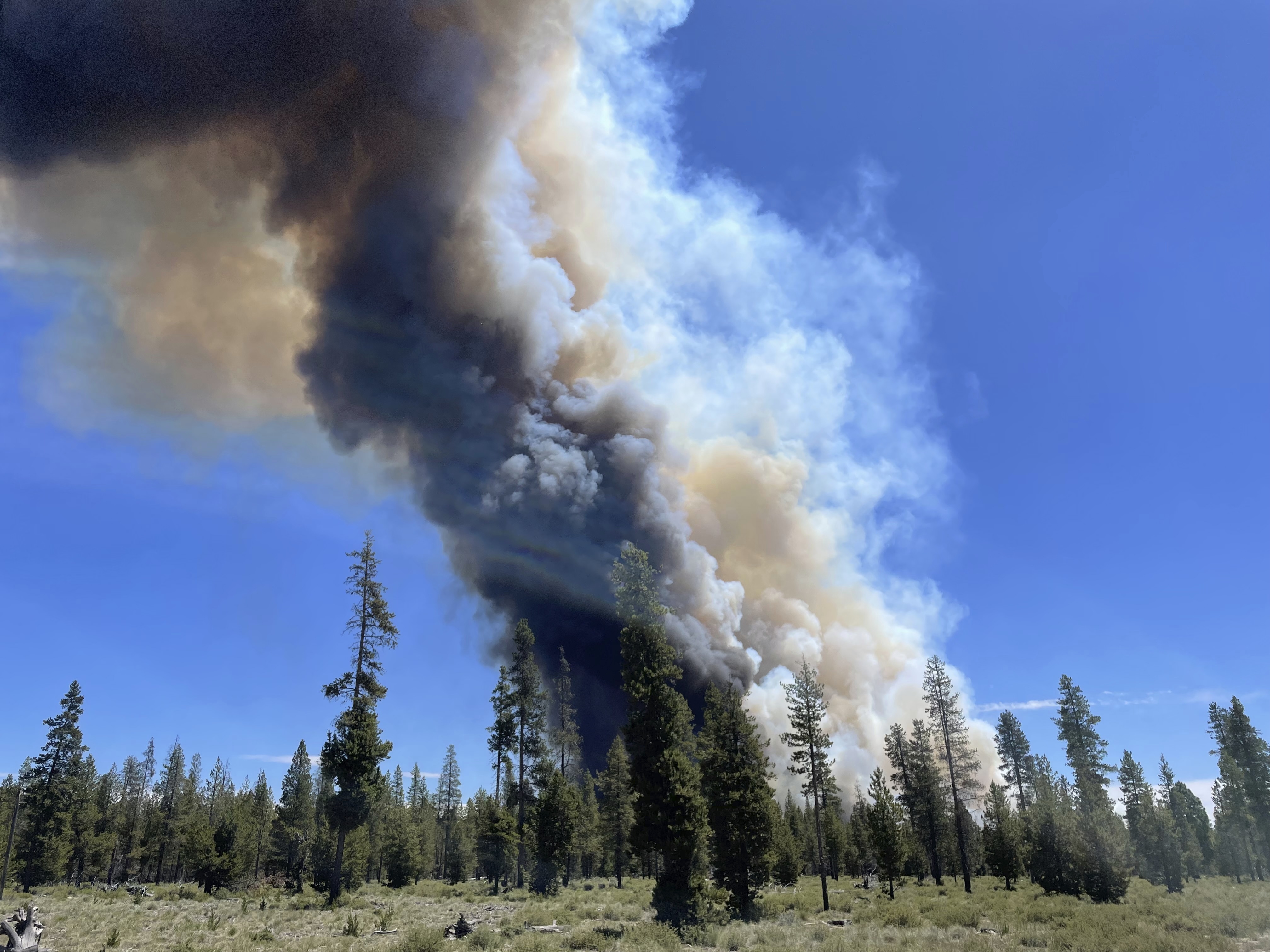
In this photo provided by the Deschutes County Sherriff's Office, smoke rises from a wildfire near La Pine, Ore., Tuesday, June 25, 2024. Gusty winds fueled a rapidly growing wildfire just outside the central Oregon community of La Pine and prompted evacuations.
Sgt. Kyle Kalambach / Deschutes County Sheriff's Office via AP
The Bachelor Complex burning near Bend is just the latest spree of wildfires to threaten homes, close businesses, and smother communities with dangerous air and ash in what’s been a long, smoky summer for many Oregonians east of the Cascades.
Mt. Bachelor resort in Central Oregon was evacuated Saturday as officials closed some of the region’s most popular trails and access to alpine lakes. The fires grew overnight Monday evening, and people in rural communities like Sunriver were told they should get ready to flee if needed. The Deschutes County Sheriff’s Office updates current evacuation maps online. Lake County also updates current evacuation information online.
Some 24 large fires were burning across Oregon this week, according to the state’s Department of Forestry. Nearly 1.8 million acres have burned so far this year, the most since record-keeping began in 1992. One person died fighting a megafire in Grant County in July. While relatively few homes have burned, this fire season has taken a toll on regional economies — from devastated ranchers near Oregon’s scorched eastern border, to struggling hospitality and tourism businesses in smoke-filled Central Oregon.
When the first major fire of the season sparked June 25, La Pine residents were the first to face imminent danger. The Darlene 3 Fire triggered evacuation orders as firefighters managed to contain the blaze and save the town. But, this was just the beginning of a trying season for a community that serves as a hub for outdoor recreation, and a waypoint to numerous national forests and Crater Lake National Park.
“I’ve spoken with a number of folks from out of state … because they were basically trying to determine whether or not they were going to maintain their vacation plans,” La Pine City Manager Geoff Wullschlager said.
His own summer plans were upended. Normally, Wullschlager would spend his free time outside fishing with his dog Molly, but this year they’ve spent more days cooped up at home, cranking three air purifiers.
Still, Wullschlager was reluctant to give any advice to potential visitors as smoke conditions can be localized, or change rapidly. Plus, he added, “I didn’t want to be seen as a catalyst for affecting the local economy in a negative way.”
For Alfredo Garibay, the economic fallout was obvious. He opened up a bustling Mexican restaurant along Highway 97 in La Pine last summer when the fire season was much milder. During this year’s parade of smoky days, Garibay estimated his restaurant Andale-Andale saw a 30% drop in sales.
“We cannot do much. I still have to have my workers. We are still paying them. I’m just trying to keep them busy,” he said.
Creating more economic resiliency in places with high fire risk is something Erica Fischer investigates as an associate professor of civil engineering at Oregon State University. More intense, frequent burns force trade offs such as prescribed burns that reduce forest fuels, she said, but also generate smoke in the cooler, wetter months.
“Often there’s a pushback from the community saying, ‘No, that’s unhealthy. We can’t handle all this smoke,’” Fischer said.
Wullschlager said planning for the economic future of his small city is “a balancing act.”
La Pine is in the midst of updating its comprehensive plan, he said, and wildlife risk is a major focus for city planners collaborating with outside experts. Some ideas on the table include updating city code or zoning to require new buildings to be more resilient to fire or smoke.
But, Wullschlager added, “We certainly don’t want to cross the threshold where it becomes prohibitive for people to create opportunity for themselves through opening a business.”




